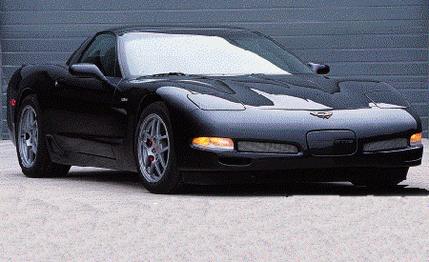
 Specialty File
Specialty File
In 1966, Chevrolet dropped a bombshell on the sports-car establishment when it slipped an optional 427-cubic-inch V-8 into the Corvette. The cost of that option, which became known as the "rat motor," was $181 for a 390-hp version and $312 for the 425-hp mill. The 427's combination of small-block "revability" (with redlines as high as 6500 rpm) and classic big-block torque made the 427 the most cherished engine among Corvette fans. After four years, in response to tighter emissions regs, Chevy enlarged the 427 to make the slower-revving, longer-stroke 454. Chevy would never again install a 427 in a Corvette.
Chevy isn't reversing that fateful decision. But the Indiana concocter of cubic inches, John Lingenfelter, recently unveiled his new Corvette engine that has, uh-huh, 427 cubic inches.
The more engine savvy among us might shrug and say, "So what? You could always buy a 427 and put it in your Vette." The point is well taken, but Lingenfelter bases his new engine not on the old iron big-block but on the Corvette's LS1 aluminum small-block.
How could this be? In our March 1999 issue, Lingenfelter himself said that since the LS1's thin iron liners prevented any increase in bore, the only way to increase displacement was to stuff it with the longest-stroke crankshaft that would fit. That longer-than-stock-stroke crankshaft upped displacement from 346 cubic inches to 370 and eventually 383 cubic inches—the most that could be achieved with the LS1 engine block. As a result, Lingenfelter switched to turbocharging as a way to obtain acceptable power levels (acceptable power in Lingenfelter-speak is 500 or more horses). What changed?
Lingenfelter Performance Engineering (LPE) developed new Nikasil-coated iron cylinder liners that replace the stock thin-walled units. These new liners allow a 4.125-inch bore, 0.225-inch larger than stock. Combine that with the longer four-inch stroke, and voilà! you get 427.6 cubic inches. Yes, we know 427.6 rounds to 428, and we include that number in our spec panel. For historical reasons, Lingenfelter says he's sticking with 427.
Meanwhile, GM Performance Parts also released its own big-bore version of the LS1 block. It too permits a 4.125-inch bore and is the same block used in the 24 Hours of Daytona-winning Corvette C5R. Since it is meant for racing, it's a beefier, stronger, and more expensive block than the stock unit.
Enlarging an LS1 by 82 cubic inches takes a bunch of work. Add up a lot of labor and new engine internals, and the $22,650 price doesn't seem so obscene. If you want to use the GM Performance Parts block, as our 2001 Z06 test car had, add another four grand. These are the prices for Z06 Corvette conversions, with their better-breathing heads and intake system. If you have a standard C5 Vette, figure in an additional three grand to cover the cost of new Z06 heads and intake. And don't forget the added charge of shipping your car to Lingenfelter's shop in Decatur, Indiana.
If those prices make your sphincter flutter, keep this in mind: In 1966, engines were not nearly as durable and required frequent valve adjustments, tuneups, and general maintenance to keep them in top condition. And don't forget that back then hard starting, stalling, and carburetion hiccups were all part of the package. Those problems do not exist in Lingenfelter's new engine, which ticked easily through our track testing. Lingenfelter says that the 427 needs no more maintenance than a stock Vette, and he even warrants his engines for two years or 24,000 miles.
But you don't care about oil changes. You want to know what kind of stomach-sucking numbers the 427 Vette can muster, and our test car did not disappoint. How does 0 to 60 mph in 3.4 seconds grab you? Or 0 to 100 mph in 7.8 seconds? That's almost a full second quicker to 60 mph than the stock Z06.
The 427 similarly rips through the quarter-mile in 11.7 seconds at 124 mph and on to 150 mph in only 18 seconds flat—both quicker than any other production car built today.
One reason for the 427's strong numbers is the smooth way it doles out the power without the tires breaking loose. Unlike Lingenfelter's turbo conversions (see sidebar), which add power in explosive bursts when the turbos spool up, the 427 pulls consistently from idle to the 6000-rpm redline. A twitchy foot will, however, easily break loose the stock 11.6-inch-wide rear tires.
Part of the 427's magic is the snap in your seat that turns up every time you stand on the gas. We like the turbo motors because they are so docile when they're not generating any boost, but with the 427, there's no turbo lag before the serious kick throws you back in your seat. And yet the 427 suffers no drivability loss. Spend some time in this 427, and you soon see why Corvette guys find that three-digit combo so alluring.
Lingenfelter Performance Engineering, 1557 Winchester Road, Decatur, Indiana 46733; 219-724-2552; www.lingenfelter.com.